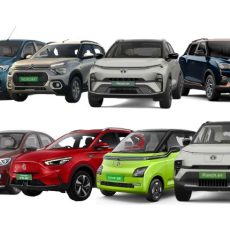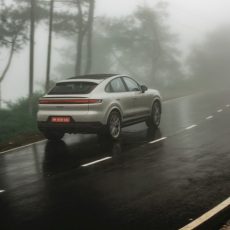Hybrid cars in India have become the new normal to maximize driving range while minimizing pollution.

As we head into an era of stricter emission norms, cars are getting more efficient by the day in addition to becoming more environment-friendly. Fully-electric cars are one option to go the green way but at the moment the choices are limited and they are not spread across all the segments. So, in this article we will look at the next best thing: hybrid cars in India.
As the name suggests, hybrids combine the power from both electrical and combustion sources. Of course, it is not as simple as that. Let us take a look at the types of hybrids we have available in India.
Micro-hybrid
These are the simplest hybrids around. They do not have much in terms of electronic wizardry. Their contribution to improve fuel-efficiency comes from an engine start-stop system that cuts the engine rather than have the car idling in neutral; giving you zero km/l. Once the driver engages the clutch pedal, the car cranks to life again. This feature allows the car to save fuel that may have otherwise been wasted while idling at a signal or in a traffic jam. A few Mahindra SUVs including the Scorpio and Bolero are equipped with this feature.
Mild-hybrid
Mild-hybrids are the next rung of hybrid evolution. In addition to being equipped with a start-stop system, these vehicles also have an Integrated Starter Generator (ISG). The ISG takes the place of a conventional alternator and starter motor, and plays two roles at once. It helps to restart the engine and also supplements the engine when needed, for example, by providing a temporary boost when pulling away from a standstill or when overtaking. These cars also use deceleration to replenish the charge in the secondary lithium-ion battery pack using brake energy regeneration. These hybrids are found across a lot of segments; from 12-volt systems in Maruti Suzuki cars to 48-volt systems in the MG Hector, and several luxury German models including Audi and BMW.
Parallel-hybrid
Parallel-hybrids are basically the essential “hybrids” use both their engine and the electric motor for propulsion. The all-electric mode is usually only good for low-speed runs for short distances and the car is driven by both combustion and electric power as the speeds increase. These cars use the combustion engine as an on-board generator to power the compact battery pack. The Toyota Camry Hybrid and most Lexus models are popular cars that use this type of hybrid powertrain.
Plug-in hybrid
Plug-in hybrids bridge the gap between a hybrid and a full-electric vehicle. They have a much larger battery back that allows them to travel further and faster than parallel-hybrids on electric power alone. These cars have the option of replenishing the battery using an electrical outlet. The engine will also kick in and recharge the battery when it runs low on charge. The engine can also work together with the electric motor(s) to provide a far superior combined output. These cars are the most practical and economical solutions on offer today. Prime examples include the Volvo XC90 T8, the BMW 745Le and the defunct but popular i8, as well as the Mercedes-Benz GLE 350 de and the new B 250 e.
If you enjoyed reading this, we have another story with even more details on this topic as well as why 48V is popular. Click here.
Story: Joshua Varghese




